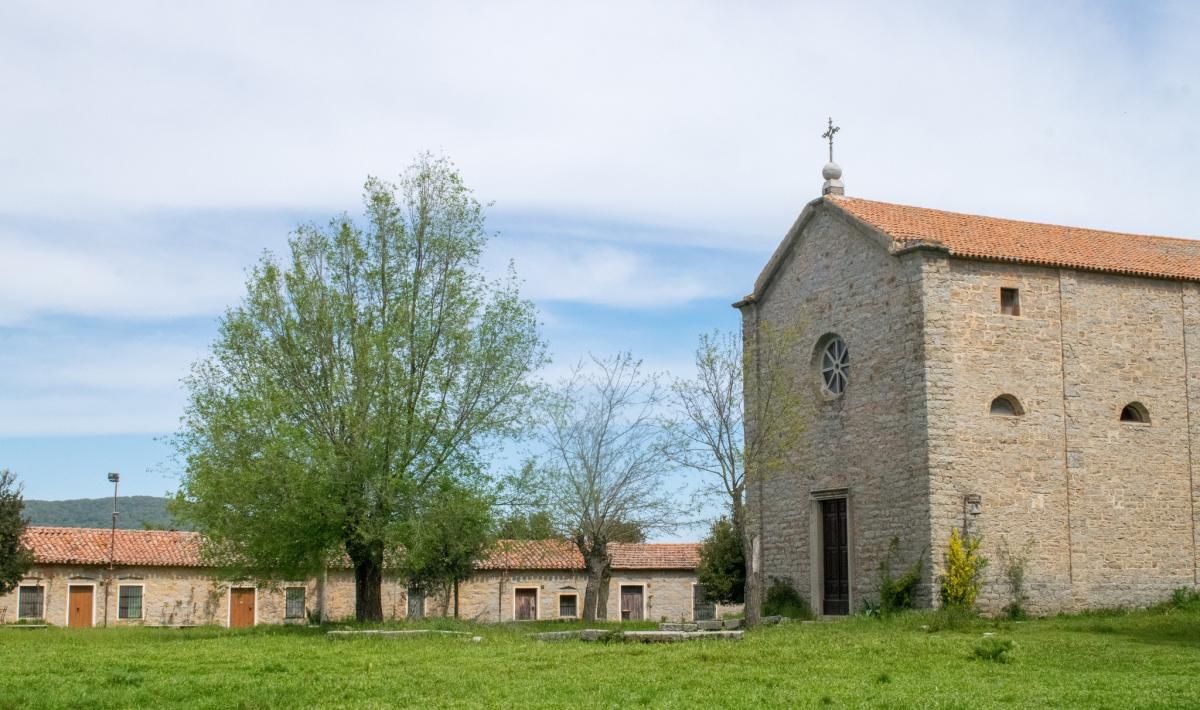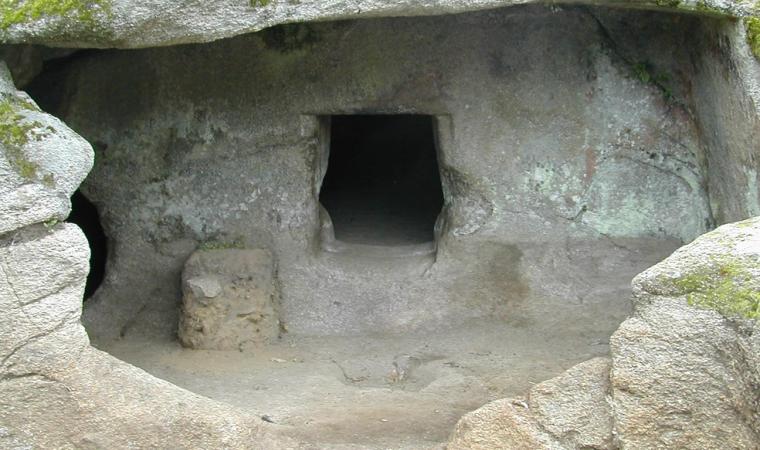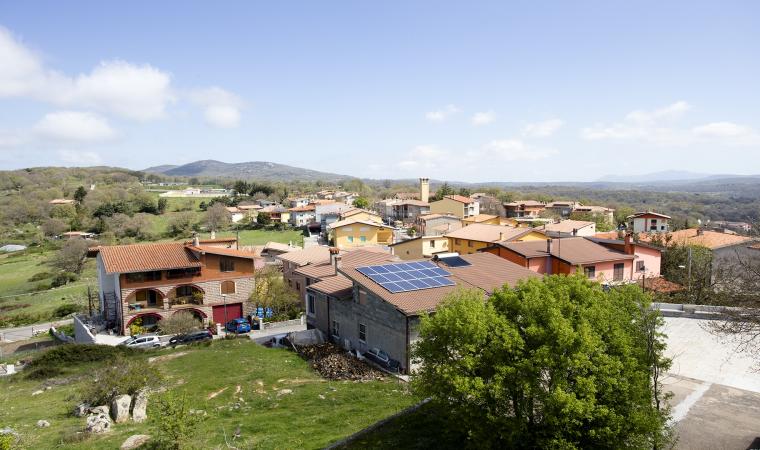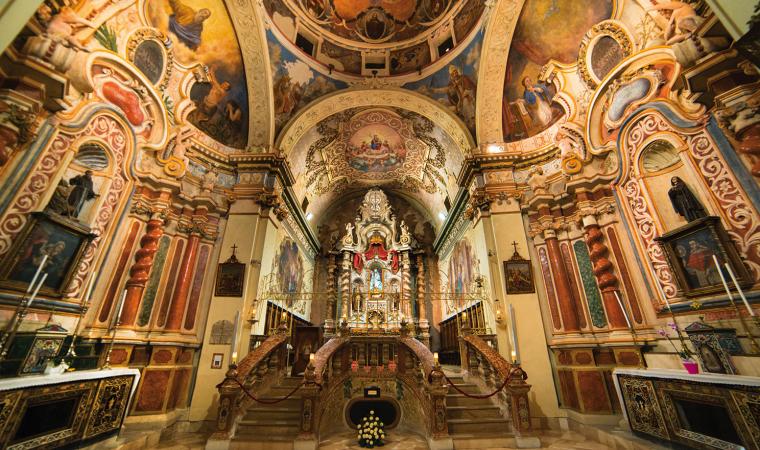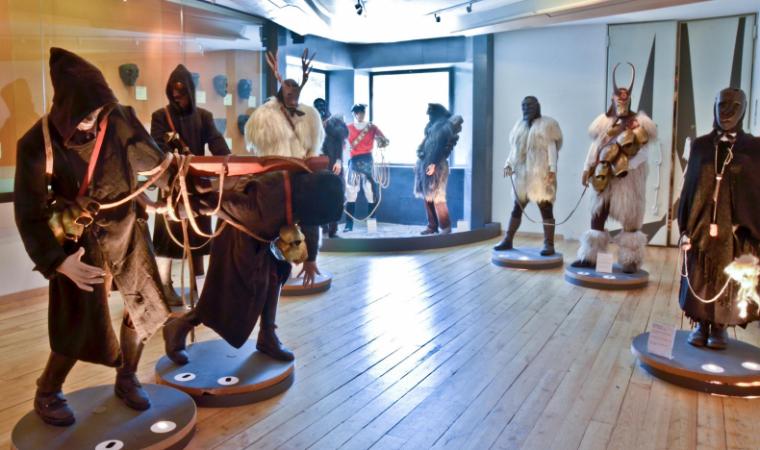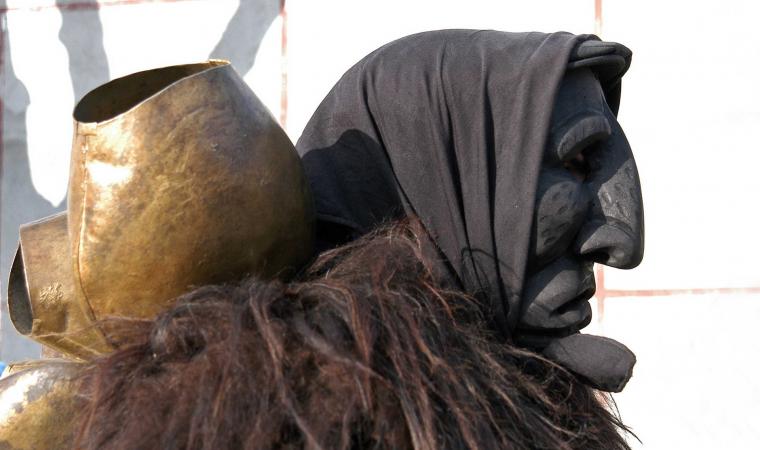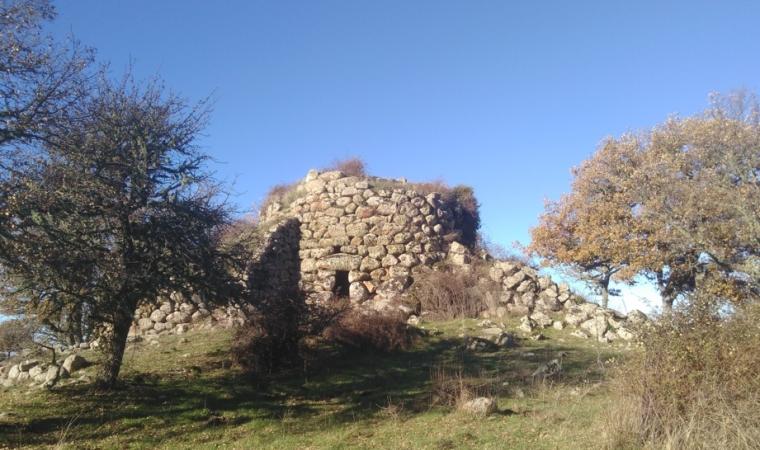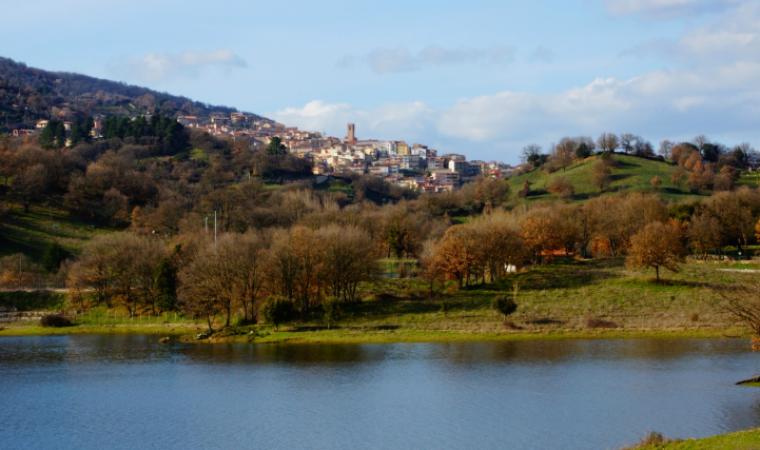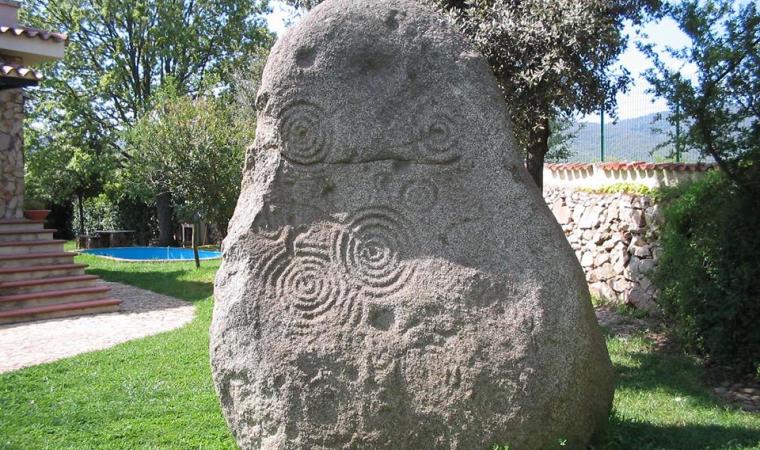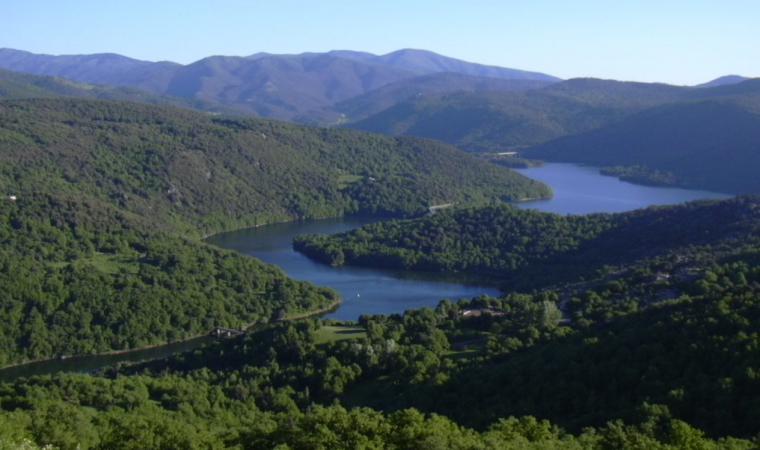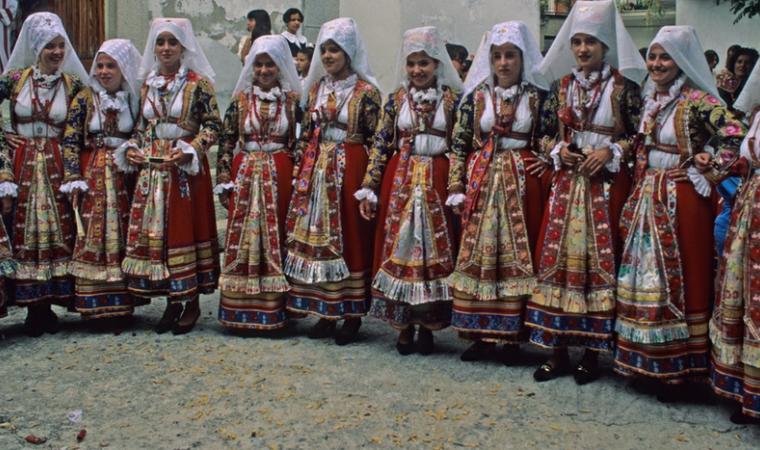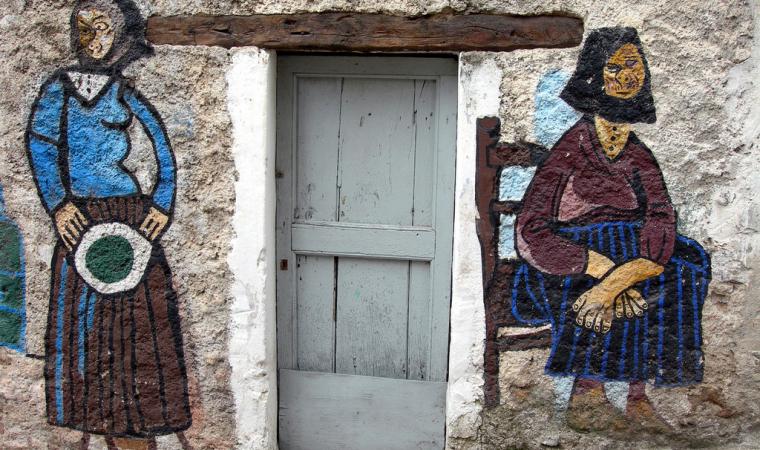Its appearance is solemn, like that of a cathedral. The church of Nostra Signora d’Itria is located eight kilometres east of Gavoi and what makes it special is the festive atmosphere and the hospitality that can be felt when the sanctuary and the cumbessias around it open up to the pilgrims, novena participants and visitors, especially during the celebration at the end of July, dedicated to the Madonna of Itria. The area in which the novenary is located has always been considered sacred: in fact, various archaeological evidence emerges in its surroundings: gigantic walls, Domus de Janas, Tombs of Giants and a few menhirs. In particular, sa Perda de sa Itria stands out. It is a granite monolith about four metres high, devoid of figurative elements and lodged in the green ‘garden’ to the south of the church, on the side not occupied by the cumbessias.
Sa Itria, as the people of Gavoi call it, stands on the Lidana plateau. It was rebuilt in the early 20th century on the site of a small church dedicated to the Virgin of Itria. There is no information about the previous sanctuary, except for an inscription on a bell kept inside the current church, which would confirm its title and testify to its existence at least in the mid-16th century. You can admire a building of considerable size, made of square blocks of granite, with a rectangular layout and an apse facing north-east. The façade is gabled, with an architraved portal above which there is a circular window. You will notice other windows on the sides, which are semicircular in shape and framed in mirrors punctuated by pilasters. Around it, positioned in a horseshoe shape, you will observe the cumbessias made of granite ashlars, surrounded by greenery. The novena and the procession come before the feast of Nostra Signora d’Itria, one of the most heartfelt by the inhabitants of Gavoi, on the last Sunday in July. The churchyard comes alive with dancing, singing and games, while fellow villagers and visitors are welcomed into the lodgings, transforming the novenary into a sort of village ‘district’ for ten days. The main event is su Palu de sa Itria, on Sunday afternoon: the palio has very ancient origins, dating back to 1388 - the year of the signing of the peace treaty between Eleanor of Arborea and John I of Aragon - and takes place in a natural ‘amphitheatre’ next to the sanctuary. Other tests of skill on horseback take place on Monday and Tuesday, while Wednesday is the day of sa ghirada a caddu, or the return to the village on horseback.
Gavoi is a town rich in attractions and traditions, which has received the Bandiera Arancione (Orange Flag) award from the Touring Club, and is ‘immersed’ in a breathtaking natural setting. Don't miss the carnival, during which there is a parade of tumbarinos – typical Gavoi drummers -, the stage of Autumn in Barbagia and the prestigious literary festival L'Isola delle Storie (Island of Stories).

